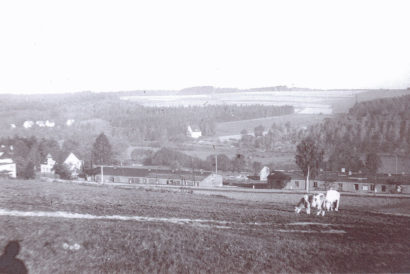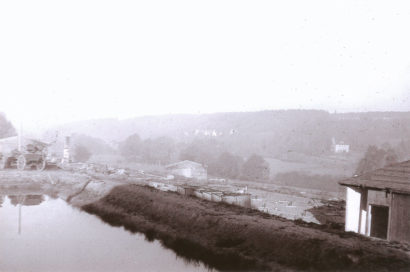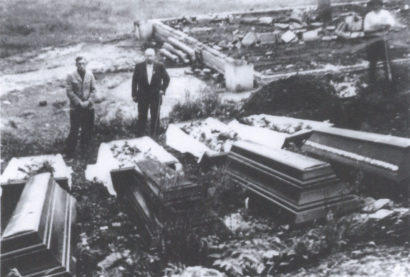Lengenfeld Subcamp
October 9, 1944 – April 13, 1945
![]()
View of the POW and prisoner camp Lengenfeld, 1945 (Flossenbürg Concentration Camp Memorial)
![]()
View of the POW and prisoner camp Lengenfeld, 1945 (Flossenbürg Concentration Camp Memorial). In the foreground, there is a fire protection pond. The barracks of the prisoner camp were already demolished.
![]()
Burying of the victims of the subcamp Lengenfeld, without date (Flossenbürg Concentration Camp Memorial).
-
Prisoners
In total about 1,000 prisoners. Half of them came from Poland, a quarter from the Soviet Union. French, German, Italian, Czech, and Hungarian Jews comprised larger groups.
-
Forced labor and quarters
Operating in two shifts, the prisoners manufactured parts for injection pumps for the “Leng-Werke”, a relocated factory of the Magdeburg Junkers-Werke.
-
From their place of work in a disused textile factory, the prisoners had to march two kilometers to their quarters along the Walkmühlenweg. POWs were also quartered in the camp, separated from the prisoners.
-
Guards
About 50 guards. After the war, detail leader Albert Roller was sentenced to death for mistreating and murdering prisoners.
-
Death toll
246 deaths, most of whom were cremated in the Reichenbach crematorium.
-
Disbanding of the camp / end of the war
On April 13, 1945, the camp was evacuated. The prisoners were forced on a death march southward, which claimed many lives. Near Haid (Bor) the march dispersed after the guards fled.
-
Commemoration
A grey stone pylon erected in 1946 stands at the cemetery of the location of the mass grave. On May 7, 1965, a memorial site for the victims of the camp was opened, built on the foundations of the former wash barracks.


